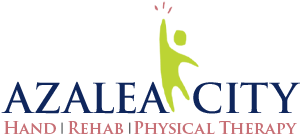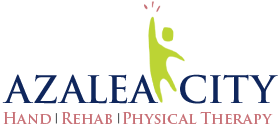Say Goodbye to Sciatica With Mobile AL Physical Therapy/Occupational Therapy

Sciatica pain is no joke-it can shoot down your leg, make it impossible to sit comfortably, and even keep you awake at night. If you've been dealing with this sharp, burning sensation, you know just how much it can impact your everyday life. But here's the good news: sciatica in Mobile AL doesn't have to be a permanent part of your life. Physical therapy/occupational therapy offers a natural, non-invasive approach to finding relief and getting you back on your feet without surgery or medications. Let's explore how physical therapy/occupational therapy at Azalea City Hand and Rehab and Physical Therapy can help you manage and overcome sciatica, once and for all.
What Is Sciatica and Why Does It Happen in Mobile AL?
Sciatica is not a condition itself but a symptom of an underlying problem. It occurs when the sciatic nerve, which runs from your lower back down through your hips, buttocks, and legs, becomes compressed or irritated. This nerve is the longest in your body, and when it's pinched or inflamed, it can cause a range of symptoms that radiate from your lower back all the way down to your feet.
The most common causes of sciatica include:
- Herniated Disc: One of the most frequent causes of sciatica is a herniated or slipped disc in the lower spine. When the soft inner material of a disc pushes through its outer layer, it can compress the sciatic nerve, leading to pain, numbness, or weakness in your leg.
- Spinal Stenosis: This condition occurs when the spaces within your spine narrow, putting pressure on the nerves, including the sciatic nerve.
- Piriformis Syndrome: The piriformis muscle, located in the buttock, can sometimes spasm or become tight, irritating the sciatic nerve that runs directly underneath it.
- Degenerative Disc Disease: Over time, the discs in your spine naturally wear down, which can lead to inflammation and pressure on the sciatic nerve.
- Injury or Trauma: A fall, accident, or injury to the lower back or pelvis can also cause sciatica.
- Regardless of the cause, sciatica can make it difficult to perform everyday activities-whether it's sitting at your desk, driving, or even walking. But there's hope for relief, and physical therapy/occupational therapy can play a key role in helping you manage and recover from sciatica.
How Mobile AL Physical Therapy/Occupational Therapy Can Treat Sciatica
The goal of physical therapy/occupational therapy is to not only relieve your sciatica pain but also to address the underlying cause of your symptoms. With a combination of hands-on techniques, targeted exercises, and education, physical therapy/occupational therapy helps you regain mobility, improve strength, and prevent sciatica from coming back. Here's how physical therapy/occupational therapy can help:
Comprehensive Evaluation and Customized Treatment Plan
Every case of sciatica is different, which is why your physical therapy/occupational therapy journey begins with a thorough evaluation. Your physical therapist will assess your range of motion, muscle strength, and posture, as well as review your medical history and daily activities. We'll also determine the specific cause of your sciatica-whether it's a herniated disc, muscle tightness, or spinal stenosis.
Based on this comprehensive evaluation, we'll create a customized treatment plan tailored to your unique needs. This plan will focus on reducing your pain, improving your mobility, and addressing the root cause of your sciatica to ensure long-term relief.
Pain Relief Techniques for Immediate Comfort
Sciatica can be incredibly painful, but physical therapy/occupational therapy includes a variety of techniques to help manage and reduce your pain so you can move more comfortably.
- Manual Therapy
- Heat and Cold Therapy
- Electrical Stimulation
Stretching and Strengthening Exercises
A key component of physical therapy/occupational therapy for sciatica is a personalized exercise program designed to stretch and strengthen the muscles that support your spine and lower body. These exercises not only help alleviate your current pain but also prevent sciatica from returning.
- Stretching Exercises: Tight muscles in your lower back, hips, and legs can contribute to sciatica symptoms. Stretching exercises help improve flexibility, release tension, and reduce pressure on the sciatic nerve. Your physical therapist will guide you through stretches that target key areas, including the hamstrings, piriformis, and lower back.
- Strengthening Exercises: Strengthening the muscles that support your spine and pelvis is crucial for stabilizing your lower back and reducing the risk of future sciatic nerve compression. We'll introduce exercises that build strength in your core, glutes, and legs, helping to support your spine and relieve pressure on the sciatic nerve.
By incorporating stretching and strengthening exercises into your routine, you'll not only find relief from your current pain but also improve your overall strength and mobility, making it less likely that sciatica will return in the future.
Posture Correction and Ergonomic Adjustments
Poor posture is often a major contributor to sciatica, especially if you spend long hours sitting at a desk or driving. Physical therapy/occupational therapy includes education and guidance on how to improve your posture and make ergonomic adjustments to your daily activities, reducing the strain on your lower back and sciatic nerve.
- Workplace Ergonomics
- Postural Awareness
These small changes can make a big difference in reducing the strain on your spine and helping you stay pain-free.
Education and Prevention Strategies
One of the most empowering aspects of physical therapy/occupational therapy is the education you'll receive on how to manage your sciatica and prevent it from returning. Your physical therapist will work with you to develop healthy habits, improve your movement patterns, and maintain a lifestyle that supports spinal health.
- At-Home Exercises: We'll provide you with exercises and stretches you can continue doing at home to maintain your progress and prevent future flare-ups.
- Lifting Techniques: Learning how to lift objects properly is essential for protecting your lower back and avoiding strain on the sciatic nerve. We'll teach you safe lifting techniques to use in your daily life.
- Activity Modification: If certain activities or movements trigger your sciatica, we'll help you modify them to reduce strain and prevent irritation of the sciatic nerve.
With the right education and prevention strategies, you'll be better equipped to manage your sciatica and avoid future episodes.
The Long-Term Benefits of Physical Therapy/Occupational Therapy for Sciatica
Physical therapy/occupational therapy offers a range of long-term benefits for individuals dealing with sciatica, helping you not only relieve your current pain but also maintain a healthy, pain-free lifestyle.
- Non-Invasive and Natural
Unlike surgery or medications, physical therapy/occupational therapy provides a natural, non-invasive approach to treating sciatica. By focusing on the body's natural healing process, physical therapy/occupational therapy helps you find relief without the risks or side effects associated with more invasive treatments. - Personalized Care
Every case of sciatica is different, which is why physical therapy/occupational therapy offers personalized care tailored to your specific needs. Your treatment plan is designed with your unique situation in mind, ensuring that you receive the most effective care possible. - Long-Term Relief
While medications may provide temporary relief, physical therapy/occupational therapy offers long-term solutions by strengthening your muscles, improving your posture, and addressing the root causes of your sciatica. The result is lasting relief that keeps you pain-free and improves your quality of life. - Education and Prevention
One of the key benefits of physical therapy/occupational therapy is the education you'll receive. You'll learn how to take care of your spine, improve your posture, and prevent future episodes of sciatica. This knowledge empowers you to maintain your health and avoid chronic pain.
Myths About Sciatica and Physical Therapy/Occupational Therapy
There are several myths about sciatica and physical therapy/occupational therapy that can prevent people from seeking treatment. Let's clear up a few of these misconceptions:
"Sciatica Will Go Away on Its Own"
While some cases of sciatica may improve over time, many people who ignore their symptoms end up with chronic pain and reduced mobility. Physical therapy/occupational therapy offers a proactive way to address the root cause of your sciatica and prevent long-term issues.
"Rest Is the Best Cure for Sciatica"
While rest is important in the early stages of sciatica, prolonged rest can actually slow down your recovery. Physical therapy/occupational therapy encourages controlled movement to promote healing and restore function to your lower back.
"Physical Therapy/Occupational Therapy Is Only for Severe Cases"
You don't need to have severe sciatica to benefit from physical therapy/occupational therapy. Even if your symptoms are mild, physical therapy/occupational therapy can help you find relief and prevent your sciatica from worsening.
Take Control of Your Sciatica with Physical Therapy/Occupational Therapy
If you're tired of living with sciatica pain and want to find a natural, long-lasting solution, physical therapy/occupational therapy may be the answer. With a personalized treatment plan that addresses the root causes of your symptoms, physical therapy/occupational therapy can help you relieve pain, regain mobility, and prevent future flare-ups. Don't wait-schedule an appointment with one of our top-rated physical therapists today and take the first step toward a pain-free life!
OFFICE HOURS
Monday
8:00am - 5:00pm
Tuesday
8:00am - 5:00pm
Wednesday
8:00am - 5:00pm
Thursday
8:00am - 5:00pm
Friday
8:00am - 12:00pm
Saturday & Sunday
Closed
Azalea City Hand and Rehab and Physical Therapy
316 S Sage Ave Ste C
Mobile, AL 36606


